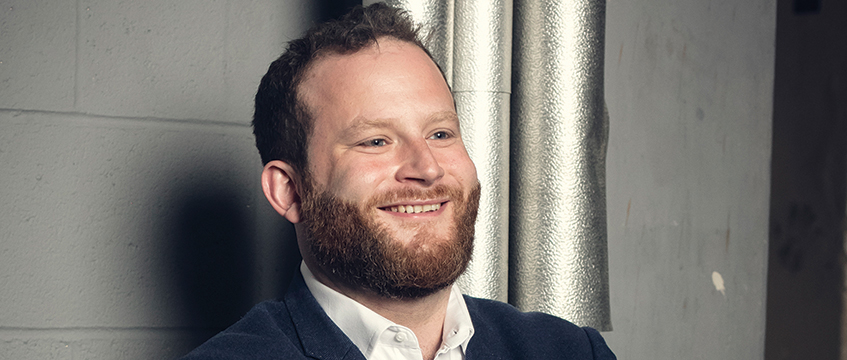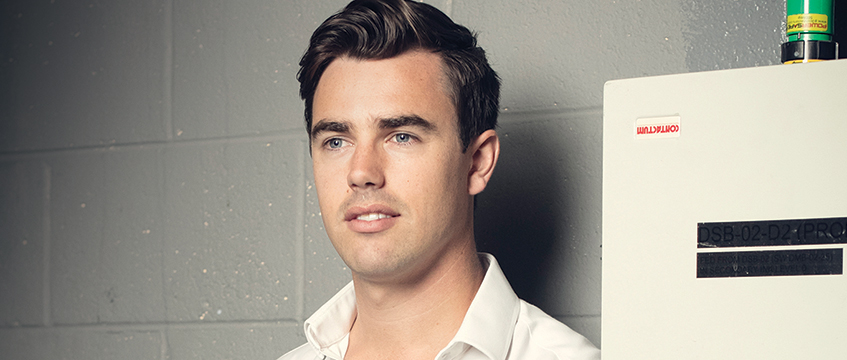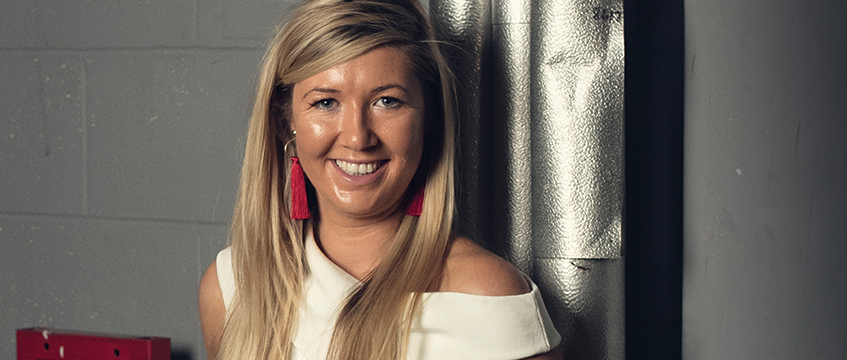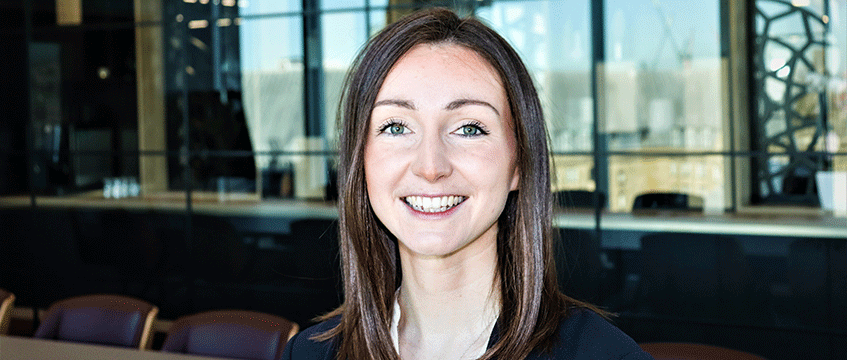Over the past five years, EG has been engaging with and highlighting some of the brightest next big things in the built environment. Through our Rising Stars awards project and Future Leaders training programme we have amassed an alumnus of close to 100 potential new leaders of real estate. After a year like never before, EG asked the next generation three questions about the future of the industry:
- What the outlook for real estate in 2021 and beyond is
- What will be the biggest catalyst for change in the sector
- Who (or what) will be the most influential in real estate in the next five years
Here is what they had to say. A unique look into how to future-proof your business for success.
Adam Eagle, chief executive, The Lifescape Project

OUTLOOK
We are going to see a continued increase in investment in sustainable and low-carbon technologies within construction projects as governments globally continue to see that even their seemingly lofty targets toward climate change mitigation aren’t even close to enough. One manifestation of that will be reduction in concrete use and emphasis on timber construction skyscrapers, which I for one am excited to see appearing across the London skyline.
CATALYST
A growing understanding of the value provided to human society by the natural environment is going to impact the way we develop and manage real estate. Whether that is carbon emissions-related, biodiversity net gain or other policy developments in the pipeline, there’s no doubt that we can’t continue with business as usual. At Lifescape we are trying to do our bit on this front, developing exciting “rewilding” projects for biodiversity net gain and carbon offsetting, right here in the UK.
MOST INFLUENTIAL
Those working in the technical development of low-carbon, low-impact, efficient real estate.
Oli Farago, chief executive and founder, Coyote Software

OUTLOOK
As a fast-growing technology company working with influential fund and asset managers around the globe, our perception of the real estate industry is always rooted in technology adoption. You hear it often because it’s true – technology adoption in real estate is booming.
Even the most traditional players in the space are innovating in response to the realisation that younger, tech-oriented players in the space are catching up to them. 2020 was an accelerant in this regard – no one could have predicted what this year was going to bring.
The industry was trending in a direction toward mainstream technology adoption for years prior but the pandemic – which necessitated remote collaboration and real-time insights into asset/portfolio performance and risk – revealed that our industry is not as flexible as it needs to be when it has to face unprecedented circumstances.
CATALYST
Imagine if your commercial real estate investments could talk. The commercial real estate industry is sitting on an unfathomable amount of data that can help mitigate risk, enable businesses working in and serving the sector to operate more efficiently, and provide more meaningful information related to performance that can be accessed from anywhere in the world, on any device.
This is the value that data can bring to commercial real estate organisations but, unfortunately, those who leverage it are the minority. Being able to simplify the importance of data and the opportunities that it presents to grow quickly, especially to up-and-coming players in the space, will be a huge catalyst for change in 2021.
MOST INFLUENTIAL
Data scientists – who are already in high demand – will become even more valuable to have on staff at commercial real estate companies. Right now, the CRE industry is in the process of centralising, cleansing and standardising data; The next step is drawing insights from that data, which will continue to be a key value proposition for third-party solution providers like Coyote Software.
Those who embraced technology from the beginning are already on to step three – using data science and predictive analytics to make data-driven decisions.
In five years, the commercial real estate industry’s understanding of data will be far more sophisticated, and the next generation of real estate technology will be using machine learning to predict macro and micro trends that will drive occupation and create value.
Robert Godwin, managing director, Lamington Group

OUTLOOK
I expect a strong recovery of pent-up demand in industries that have been hit the hardest, for example travel and hospitality. However, the collateral damage to these industries is escalating from the restrictions, and the sector will not recover to 2019 levels until 2023-24.
CATALYST
Innovation and adaption. Companies need to reflect on their business models, defensiveness of income, and alignment with current and future trends. If you are not growing, you’re dying, and the need to act to maintain market has been exacerbated during Covid.
MOST INFLUENTIAL
Leaders of forward-thinking, disrupting businesses that better target the customer needs than traditionally slow-moving real estate. Consumers are better educated and better informed and will move their custom quicker to business that better serve their conscious and subconscious needs.
Emily Hamilton, head of ESG, Savills IM

OUTLOOK
Covid-19 has shown the property industry is resilient and innovative, whether that’s rapidly repurposing buildings such as the ExCel temporarily becoming a Nightingale Hospital or hotels providing temporary accommodation to NHS staff who needed to be close by. 2021 will be a tough year and what would be great to see is would-be competitors continuing to collaborate to support the Covid-19 recovery, as much as the property sector supported the emergency relief efforts.
CATALYST
In the short term I hope it will be the property sector stepping up to help rebuild the economy, demonstrating that property and the built environment can be a force for good through greater NGO, public and private sector partnerships. Longer term, how the sector responds to the global biodiversity decline (The 6th Mass Extinction) that is facing us will impact how we manage properties and what we build, as natural resource use becomes increasingly scrutinised in financial and non-financial reporting.
MOST INFLUENTIAL
Nature experts will become increasingly more important to the real estate sector as we start to drill down into how materials are used, where they come from and what is the property’s sector’s biodiversity footprint, as well as the risks and opportunities associated.
Many investors are starting to understand that biodiversity loss equates to financial loss although the property industry is so far slow to respond. Those organisations that start to examine their biodiversity risks and opportunities will be able to stay ahead of emerging international frameworks like the Task Force for Nature Related Financial Disclosures, as well as the more localised requirements for biodiversity and environmental net gain.
Beth Hampson, commercial director, The Argyll Club

OUTLOOK
Real estate that offers a place for people to connect, regroup and collaborate with teammates will be the most sought after in 2021. Our clients have relayed that face time with colleagues is what they’ve missed the most throughout lockdown and we’ve already seen this playing out this year with demand for day-working products, including co-working, meeting rooms and day offices, surging in September and October.
Fundamentally, the past year has accelerated the trend of real estate – and, in particular, workspaces – becoming more experience-led, and this will continue shaking up the industry in 2021 and beyond. The office now needs to be a “one-stop-shop” if it is to incentivise workers to return. This, of course, means a well-designed, safe place to work but also a place to catch up, eat and drink with colleagues after months apart.
On-site offerings such as yoga classes or quality bars and restaurants are no longer optional extras. Real estate must become a destination rather than just a location. Faced with the challenges of the pandemic, offices should look to successful retailers for an example of how real estate can adapt in the face of an existential challenge. Just as shops had to move fast to combat the rise of e-commerce, so too must offices transform in a post-Covid world to become a lifestyle destination that meets employees’ high expectations.
CATALYST
The need for ultimate flexibility that allows workers to seamlessly transition between home and office will be the biggest stimulus for change in the sector. Hybrid work solutions, such as day offices and dedicated desks for the day, will be increasingly in demand for teams looking to meet a couple of times a week and maximise their time together.
However, flexible working must not mean compromising on the benefits of private and bespoke spaces. We’re also seeing demand for offices to be more personalised and provide a home away from home; 20% of recent enquiries have been about installing in-office kitchens, meeting rooms or showers.
MOST INFLUENTIAL
In the world of offices, the key needle mover is the corporate. Businesses of all shapes and sizes have been steadily moving away from conventional leases and increasingly taking up more flexible workspace options in recent years. But in the wake of Covid-19 and the significant effect it has had on working habits, even corporates are now increasingly seeing the benefits of flexible working.
Those looking to recalibrate their workspace after this year’s protracted lockdowns and reunite teams in prime central locations on a flexible basis are the ones to watch as a major growth opportunity for the market.
Kat Hanna, masterplan strategist for Euston, Lendlease Europe

OUTLOOK
2021 will be the year that real estate gets serious about mixed use – both in terms of within buildings, across developments and investment portfolios. The experience of the past year has shown that diversity of uses is key to resilience to major and rapid change. CBDs have struggled more than peripheral and suburban high streets.
This shift to genuine mixed use will see currently mono-cultural areas can diversify their offer to visitors, occupiers, and investors (see City of London as one good example of this), for example, through repurposing existing or underused spaces. We are also likely to see some rethinking of planned developments, perhaps to recognise the importance of open space, or having a mix of amenities within walking distance.
CATALYST
There’s little doubt that both as a society and sector, we are going to be feeling the impact of Covid for years to come. I’d suggest that a lot of these changes are not new but an acceleration of existing trends. For example, while I don’t think that Covid has killed the office, I think it may well have killed presenteeism, leading to changes in how office space is used and designed.
The big challenge, of course, is making sure we don’t respond by providing permanent solutions to temporary shifts – which is where the more deliberative nature of the sector may work in its favour. At the same time, it would be a shame to see us fail to learn from the ability to deliver temporary solutions to ingrained problems in our cities, whether it’s addressing homelessness or reallocating street space to make more room for people.
MOST INFLUENTIAL
People in real estate are good at talking to people in real estate. What will be most useful, not just to us a sector, but to society as a whole, is thinking about who we talk to those outside real estate, and whose voices tend to be under-represented.
As a sector, we cannot tackle any major challenges, whether it is urban inequality, climate change, or economic decline without having a wide range of voices at the table, and leading the decision-making process. While progress is clearly being made on gender diversity, the BLM movement has highlighted how far the sector has to go to be representative of the society in which we operate.
Megan Hanney, UK development advisory, CBRE

OUTLOOK
There will be significant changes in the way we live, work and play as we absorb the impact of Covid-19. Continued, yet enhanced, flexibility will feature largely through enabling mechanisms such as the hub-and-spoke model, which allows regional areas and satellite towns to grow into wider mixed-use destinations. Individuals are then afforded the flexibility required to maintain productivity beyond the pandemic in a way which positively enhances the quality of their professional output, personal life and leisure pursuits.
CATALYST
Growth of the data centre market and deployment of 5G. Digital infrastructure will serve a plethora of technological advancements including the internet of things, artificial intelligence, data exchanges, blockchain and more – all of which will impact the composition of future developments, net-zero strategies and the curation of ecosystems within the built environment.
MOST INFLUENTIAL
Data scientists and infrastructure specialists. The two combined are pretty much shaping the redesign of the next decade and those seeking to play a part in the development and delivery of commercial real estate should be actively engaged with both.
Emma Harvey, programme director, Green Finance Institute

OUTLOOK
As the UK and other major economies emerge from the global pandemic and pursue a “green” recovery, the focus on building-specific emissions and climate resiliency will continue to gather momentum.
The urgent need for practical actions that decarbonise the built environment will become increasingly apparent in 2021 and beyond, as tighter regulations and more granular disclosure requirements come into force.
However, the net-zero transition also offers significant opportunities to the real estate sector – those organisations that embed sustainability into their long-term strategy and adapt their portfolios with the continued shift in how we use buildings, can benefit from sustained commercial benefits.
CATALYST
Across the real estate sector, a heightened awareness of the unique risks and opportunities with the net-zero transition will catalyse action to decarbonise the built environment. A breadth of stakeholders can, and will, provide the spark for change – including investors, policymakers, tenants and homeowners – and the introduction of innovative green financial products can help to enable and sustain this movement.
MOST INFLUENTIAL
The global response to the health crisis demonstrated the power of cross-sectoral collaboration – this approach is highly transferable and relevant for real estate. Partnerships between the property and finance sectors, focused on developing the technical and funding mechanisms to enable change without compromising commerciality, will become increasingly important over the next decade.
In addition, consumers of the built environment – whether individual homeowners, tenants or occupiers – will be key influencers in the future, with their power to demand greener properties and to reflect their lifestyle choices in the physical environment.
Alanna Hasek, legal director, DLA Piper

OUTLOOK
2020 was remarkable and incomparable. The effects of Covid-19 have been felt in all facets of life across the globe, including the real estate sector. The transformation to the way people live and work has accelerated a number of disruptive trends which were already being seen.
As the impact on all three mainstay sectors of the real estate world – office, retail and hospitality – is being felt strongly, at DLA we have seen a continued focus on assets which have been less disrupted, with particular demand for the logistics, data centres, healthcare and life sciences asset classes.
Even with the glimmer of hope of the vaccine, trends such as remote working and e-commerce will not go away. While, in the short term, investors may continue to look to those asset classes as a “safe haven”, longer term the sector needs to continue to respond to these changing trends and find solutions to how we repurpose real estate and shift our mindset to seeing property as a service.
CATALYST
A combination of the 2050 net zero emissions laws, changing consumer lifestyles and autonomous vehicles will drive significant change across all property sectors. As nearly all existing and new-build buildings will be in use by 2050, every facet of how we design, construct and use these buildings will need to change to be carbon neutral.
The impending adoption of autonomous vehicles and high-speed wifi infrastructure will also transform how and where the nation lives and works from the traditionalist mould.
MOST INFLUENTIAL
You, me, the normal man and woman on the street. We all have the power to determine the future real estate landscape. How we each respond to the questions of how we want to live, shop, work and play in a (hopefully) post-Covid world will be key. Those players within the sector that are most able to listen to these customers, be creative and adapt quickly to their voices will emerge as the winners.
Hana Hassan, senior project surveyor, Willmott Dixon

OUTLOOK
Predicting what the future holds is difficult while Covid is lingering and we are still reacting and adapting to uncertainty and challenge. While real estate continues to recover from the global shock, it will be interesting to see which changes during 2020 were a temporary reaction, and which have the ability to shape the future of real estate – whether this is providing buildings with greater adaptability, more of a focus on outside spaces or enhanced technology for remote working.
What we do know is that through this crisis we have been afforded a unique opportunity to stop, reflect and reprioritise our mission as a sector. If we use this pandemic as a learning opportunity, we can see our sector becoming more focused on what really matters – our health is our wealth, so greater investment in healthcare, and really pushing the agenda on climate change.
CATALYST
We have seen how powerful nature can be, and also how effective humanity can be in solving problems when the world works together. Clearly the short-term environmental benefits that were realised during the height of the lockdowns came at too high a human and economic cost but it reemphasised the need for balance between human activity and the environment.
Integrating green policies, putting sustainability at the heart of the agenda and investing in technologies which will support this can help the sector achieve its goals. The construction and development sub-sectors of real estate are hugely impactful; we have a responsibility to lead change, to restore and protect our planet and to use our precious resources in a more sustainable manner.
MOST INFLUENTIAL
Companies developing creative and innovative technologies to help evolve our sector will be important. This could be greener technologies for construction processes, enhanced technology for greater connectivity within the wider industry and around the globe, smarter buildings, low-carbon tech or automation. When innovation levels are increased within this industry in particular, economic growth is promoted and now more than ever, we need to really embrace and invest to safeguard our futures.
To send feedback, e-mail samantha.mcclary@egi.co.uk or tweet @samanthamcclary or @estatesgazette











